The UA:SOUTH team is starting a new column and sharing with you recipes for dishes not only of Crimean Tatar and Ukrainian cuisine, but also of the whole world!
All my friends love it, but many of them can't remember what it's called. And in general, few people can, because almost everywhere it’s called dolma. Oh, how many arguments on what is sarma and what is dolma I had to hear in my life! So, let me explain.
In Crimean Tatar cuisine, sarma is something similar to Ukrainian cabbage rolls or German Kohlrouladen, only wrapped in grape leaves (although many Crimean Tatars wrap them in cabbage leaves, too). Why sarma though? "Sarmaq" in the Crimean Tatar language means to wrap. But why Azerbaijanis and Armenians call them "dolma" is a question for them, I have no idea.
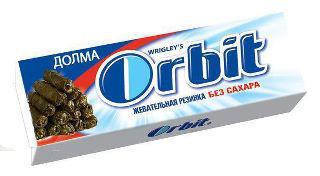
We also have dolma - you will be very surprised to find out what it is, but I will talk about this dish later. Turks, just like Crimean Tatars, call the rolls made of grape leaves sarma. Only for them, it is more like an appetizer rather than a main course and Turkish sarma is without meat and served cold.
But I will get back to the Crimean Tatar sarma. A hot, tasty, juicy, aromatic analog of Japanese sushi. Well, why not? Both have rice in them. Sarma is wrapped in grape leaves and sushi is in nori. Sarma is served with sour cream and toast, and sushi with soy sauce and wasabi. Only sarma is a hot dish, while sushi is traditionally not. The first ones have meat, others have fish. This is very logical, you really don’t want sushi with goby and whitebait - the typical fish that the Black Sea can offer.
To cook sarma, you will need the youngest leaves of the South Coast Riesling type, collected at dawn on the virgin meadows of the west-east side of the Mt. Ay-Petri (the second biggest mountain in Crimea). But since it is so difficult to get there now, you can get by with a jar or a vacuum pack of grape leaves from the nearest Turkish/Greek/Arab store. Well, if you are the lucky owner of a vineyard, you can collect fresh leaves, preferably the younger ones. If the leaves are too hard, you can soak them in boiling water. And if you have way too many leaves you can just put them in a freezer. The leaves do not lose their taste at all, I personally checked!
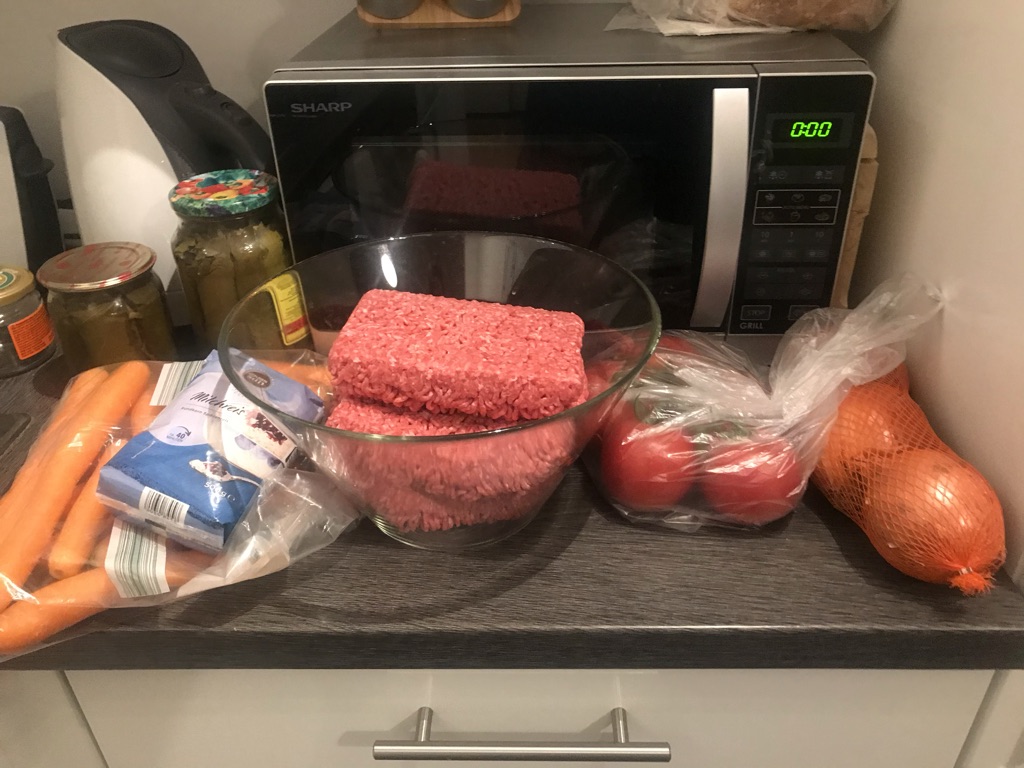
Next, you will need ground beef. Recently, I myself have been cooking it without meat and using a vegan substitute. It turns out great - my Berlin friends say that I can make good money on it. So one day when I finally bring the level of energy I used to have before 2014, I’ll definitely open my own sarma cafe!
For vegetables, you will need just onions and carrots. I grate carrots and fry them in oil with tomato paste. Then finely chop onions and add them to the minced meat. I also add a mixture of carrots, tomato paste, and oil to the minced meat when ready. Then add rice, salt, and pepper to your taste. Some people cut parsley in this mix and it also turns out tasty - I of course personally checked and approved. It is necessary to add water to the minced meat so that the minced meat is light and juicy. Without water, sarma can turn out dry. You can (and should!) also make the topping for sarma. I will tell you how to cook it a little later.
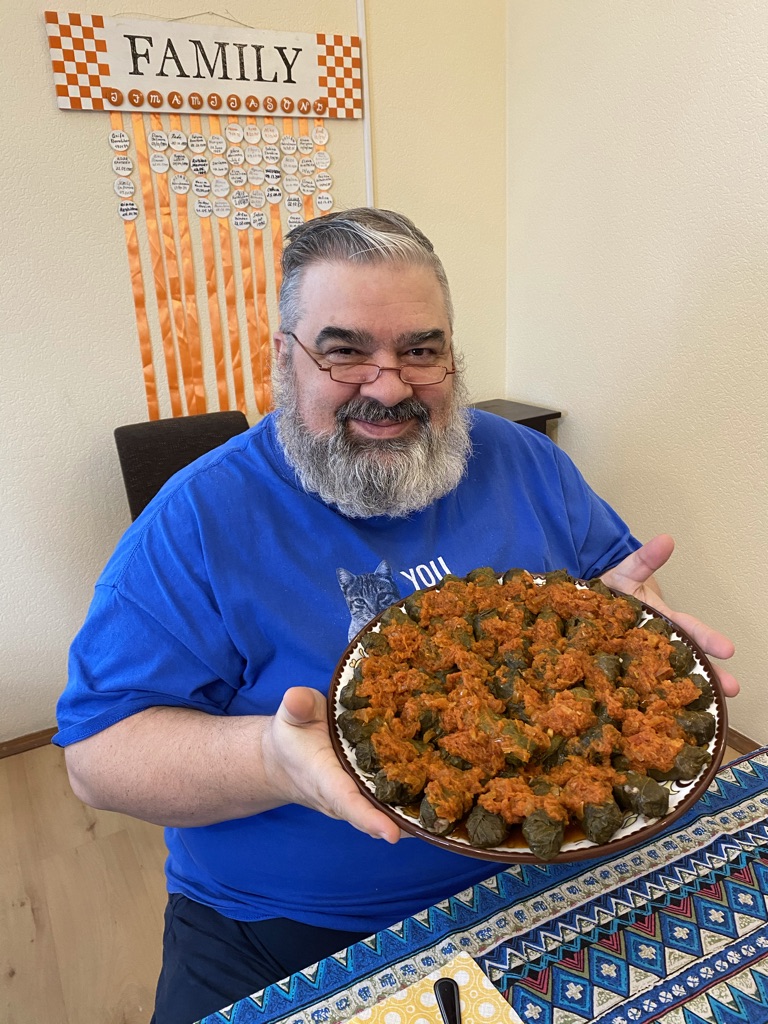
This lucky owner of a whole dish of sarma is my American friend Mike, who I met in Crimea in 2010. After the annexation, both he and I moved to Kyiv with our families, and every time I visited them, I cooked sarma. This has become their favorite dish since the days of free Crimea. When I moved to Berlin, Mike's wife, Melanie, learned how to make sarma herself and she’s become really good at it! She has been doing this in the States for more than a year now - the whole family had to leave Kyiv as suddenly and as fast as they had to leave Crimea, thanks to the Russian “Deer Leader”. But this is a whole other story. (c)
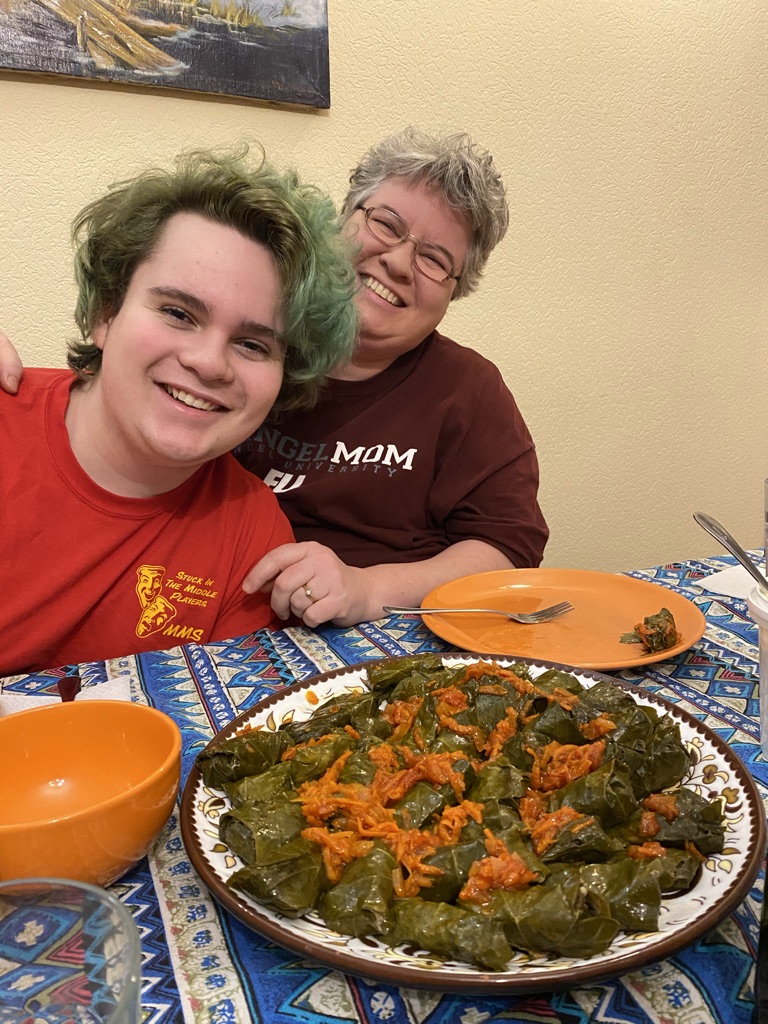
Now let’s get to the most interesting part of your sarma cooking journey - proportions. I, like many Crimean Tatar women (and other people who often cook), do everything by eye. And to taste. In grams, cups, spoons, and pieces, my recipe looks something like this:
1 kg of ground beef (or half a kilo of vegan ground beef substitute)
2-3 medium carrots
4-5 onions
2-3 tablespoons of tomato paste
1 cup of rice
Salt, and pepper to taste
1-2 cups of water (look at the consistency so that the minced meat is airy)
And the actual grape leaves. For this amount of filling, you will need a jar or vacuum packaging with a volume of 500-700 ml.
For the topping you’ll need:
2-3 medium carrots
1-2 bulbs
And an amount of tomato paste that you personally find would be good for you. I put five spoons, you can put more, you can put less, it all depends on how you like it.
The process of wrapping sarma is quite interesting. Especially if there is a company. For someone, hookah (shisha) is a social activity, and for me, it is a wrapping of sarma. I often gather guests at my place and ask them to wrap with me (or without). Because one who does not work does not eat! If I'm wrapping sarma myself, then during this time I manage to watch a couple of episodes of some show on Netflix, which is also not bad. Given my complete inability to sit down and watch something without my hands being busy and my general neuroticism (which has been multiplied by a million times thanks to the same Deer Leader), it’s a win-win situation. Sarma is wrapped, some episodes are watched, and the nerves are calmed.
Wrapped sarma should be placed in a pan with a thick bottom. If you don't have such, you can put cabbage leaves on the bottom so that your sarma does not burn. When you have finished wrapping, put a plate on top of the sarma (so that the rolls do not float and open), put the sarma on fire, pour boiling water on this plate and add salt to taste. The water should cover the sarma by about 3 cm. When it boils, reduce the heat and cook for another 30-40 minutes until fully cooked.
While the sarma is being cooked on the stove, you can prepare the topping (or just “the red stuff” - it’s the way my American friends call it). Grate carrots, and put them in a pan with oil. Fry until they become of lighter color, add onions, and when they turn golden, add boiling water, tomato paste, salt, and pepper.
Sarma and cabbage rolls (both Crimean Tatar and Ukrainian) are so close relatives that sarma can be also wrapped in cabbage leaves. But it’s way too much work - you need to boil the cob, remove the hard parts, and cut the leaves to fit the size. It is much easier with grapes.
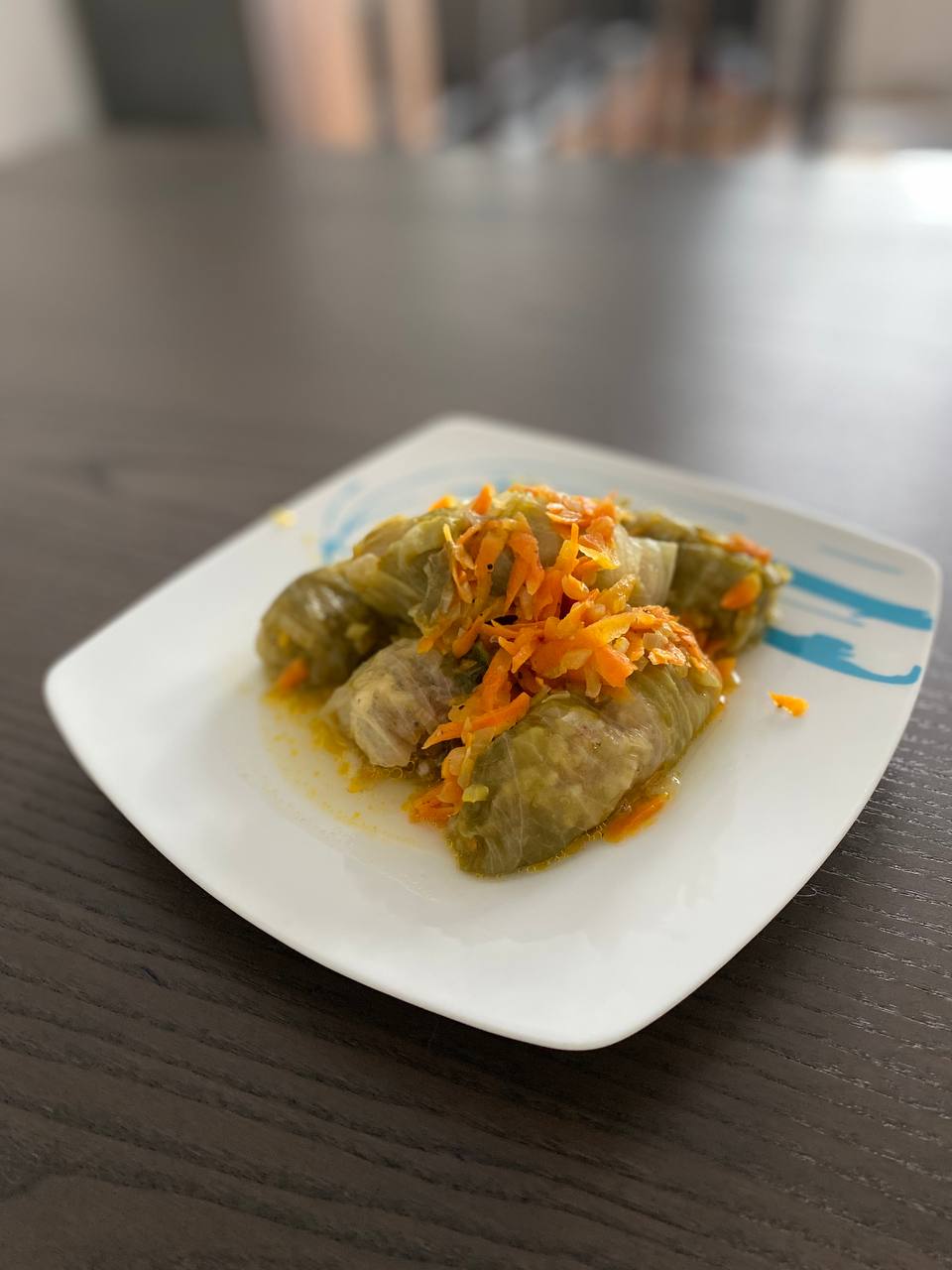
And finally - the dolma that I announced at the very beginning. "Dolmaq" in Crimean Tatar means "to fill". How do we cook it? We just stuff the deseeded pepper with the same stuffing as for the sarma. Why dolma is sarma among Azerbaijanis, who belong to the speakers of the Turkic language group like us, is still a mystery to me. And another fact - unlike sarma broth, dolma broth has a very nice color and flavor, so some people serve it with dolma and call it dolmalı shorba. ("Shorba" in Crimean Tatar means "soup").
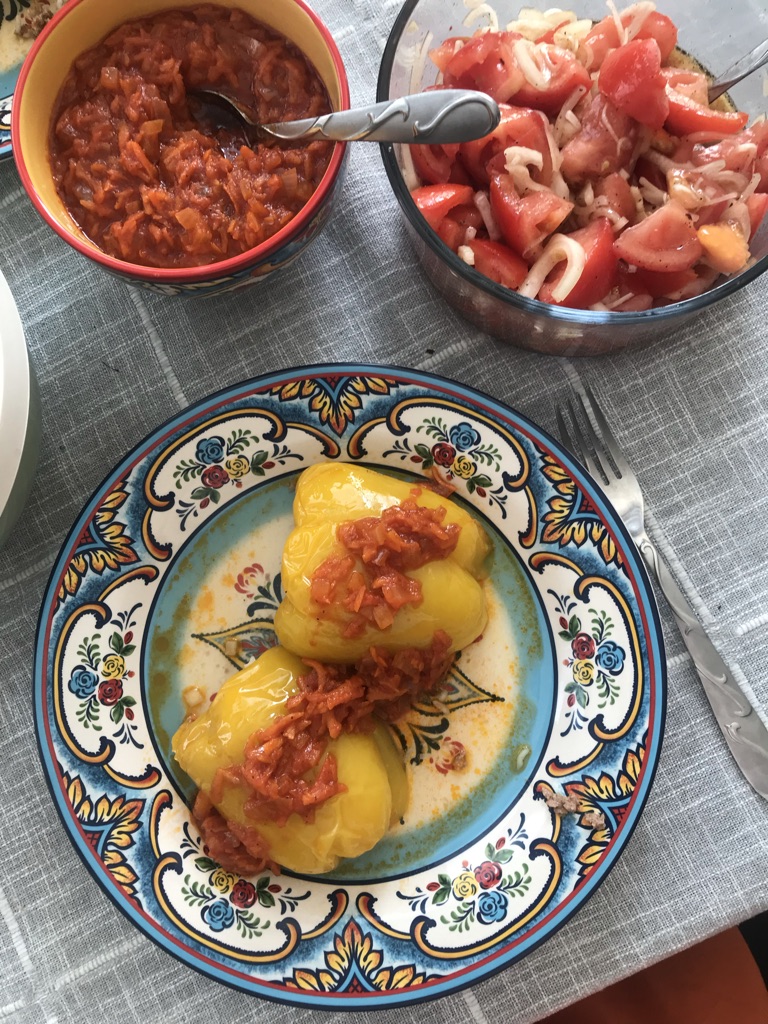
Dolma can also be baked in tomato sauce in the oven, but it turns out in a certain Mexican manner. Special gourmets (or those who miscalculated the proportions and prepared more filling than necessary like I usually do) can use eggplants, zucchini, and even tomatoes instead of pepper. It turns out amazing: each of the vegetables shares its taste with the filling.
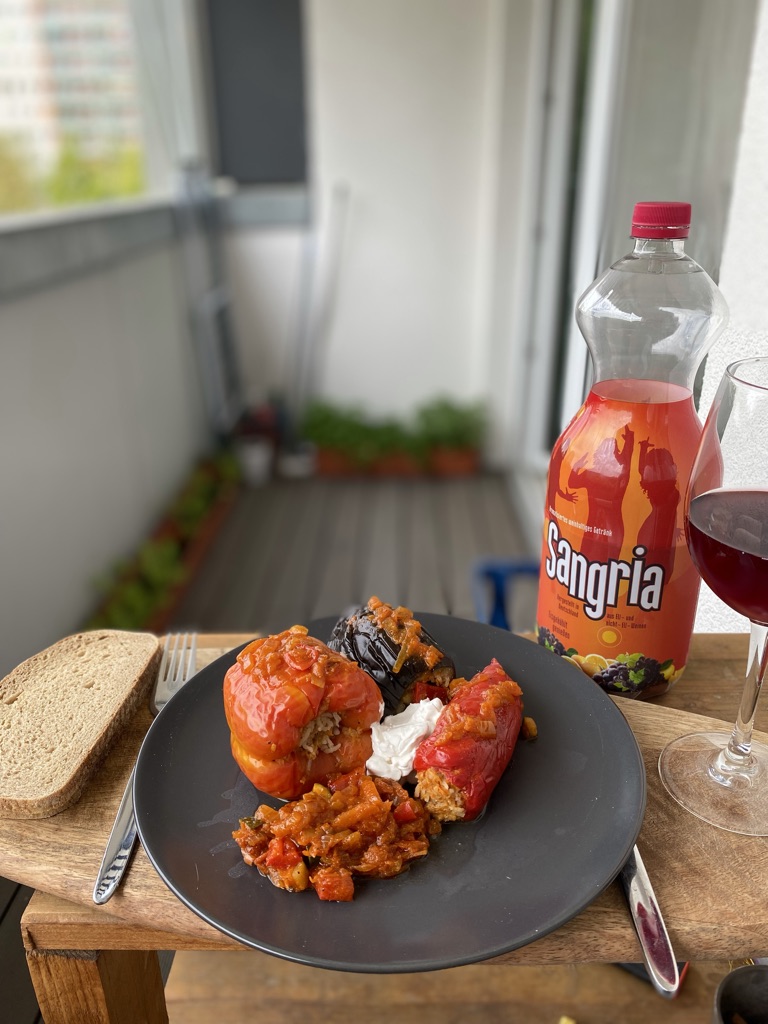
With all that being said, I wish you all the fun when cooking and a bon appetite when eating. Aş tatlı olsun!
P.S. I have to admit that this is just wonderful: instead of "bon appetit" the Crimean Tatars say "may your food be sweet". The fingers of one hand are enough to list our national desserts, but there are not enough stars in the sky to list the combinations of meat, dough, and vegetables, but it is these combinations that these amazing people want to be sweet for you!